Note: This preview uses pre-release components and rules. What you see here may be different from the final, published game.
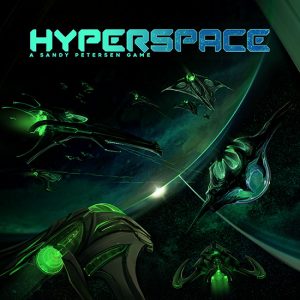 If you rewind to the “Golden Age” of science fiction, the potential of interplanetary travel sparked imaginations of a future filled with rocket ships and colonies across the stars. This gem of ideas in fiction eventually made its way into board games, but it wasn’t until the late 1970s that grand conflict games emerged.
If you rewind to the “Golden Age” of science fiction, the potential of interplanetary travel sparked imaginations of a future filled with rocket ships and colonies across the stars. This gem of ideas in fiction eventually made its way into board games, but it wasn’t until the late 1970s that grand conflict games emerged.
Whether the gaming audience was just not ready or the transformation of civilization games into space-themed games had yet to take root, it wasn’t until the turn into the 1980s decade that brought gaming more commercialized and popular visions of interstellar conflict. This was mainly through war games. At that time, titles that drove the market were based on popular fiction such as Dune (Avalon Hill, 1979) and Star Fleet Battles (Task Force Games, 1979).
Suffice it to say, game designs have come a long way since then. This is not a post-Master of Orion era, nor even is it enough to say it’s a post-Star Wars era. Ours is an era steeped in four editions Twilight Imperium and a plethora of TV shows and movies that have deluged our imaginations with epic galactic conquest and inter-species drama. The real challenge for games now is to develop something that meets the stylistic needs of the sci-fi gaming audience while delivering something new to customers of space conflict games.
Petersen Games aims to do just that with their upcoming title, Hyperspace. It’s a 4X (exploration, expansion, exploitation, extermination) far-future sci-fi/space game with loads of miniatures, ever-flowing victory points, and just enough luck with dice-based combat. It’s a manageable beast of a game for 2 to 6 players and accurately delivers a playtime in under 3 hours, even at the max player count.
Gameplay Overview:
The core of the game structure is familiar. Each player represents a galactic species conquering a virgin region of space filled with planets producing resources. This preview is based on a prototype play in which no human race was offered. However, it is reported that the Kickstarter will include many, many playable alien races with special powers galore. Of course, this asymmetry is another welcome attribute of space conflict games.

The play space is populated with a large hex tile map. Each hex has planetary spaces (continents) as well as open space in the same system for placing starbases and fleets. A game begins with all hexes face down, so exploration via movement is necessary at the beginning of the game. Planets will provide two primary resources (Metal and Atomic) and potentially one wild resource (Organic).
The primary turn structure for Hyperspace is also direct and simple. Each turn, a player gets to take 3 actions from the following choices:
- Battle – This is pretty self-explanatory. Players roll dice in combat against an opponent in the same hex. Normally, players can share space in the same hex for as long as they like.
- Build – Spending Metal, players can build new structures or ships.
- Move a Fleet – Spending Atomic, players can move an entire fleet from one hex to an adjacent hex. If the hex tile has not been explored, it flips over.
- Produce Metal or Atomic – A distinguishing feature of this game is that players must take an action to produce resources, either Metal or Atomic, but not both.
- Research a Technology – Players can spend Atomic to research any tech tiles they have in their pool. Once it’s researched, it’s placed on a player’s board and a new tech is drawn into the pool.
- Salvage – Sometimes ships will survive combat or another salvage is available on a planet. Performing Salvage is free, but it does take an action. When complete, repaired ships return to the board or salvage tokens go into a player’s supply to be used as Organic resources.
- Self Destruct – Since the game limits the quantity in play of almost everything, this action allows players to remove something from the board back into their supply.
- Rebirth – In desperate times, a player can take this action to in effect reset themselves back to their state at the beginning of the game.
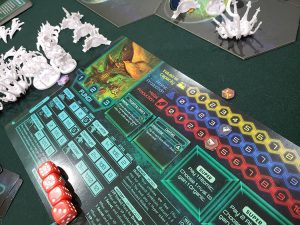
Hyperspace is won by victory points. However, the timing of the end game is not set in stone. Once a player has 15 victory points from various empire building objectives, they can begin the end game. The final tally of victory points then begins. These will total from colonies on planets, starbases in orbit, special race-based victory points, and hidden victory points from Secrets Cards.
Secrets Cards are gained from a variety of sources, but most often from exploration and taking successive actions to move up victory point tracks for Research, Exploration, and Combat. These cards also have private victory points on them so other players won’t know an opponent’s true total until they gamble with the end game.
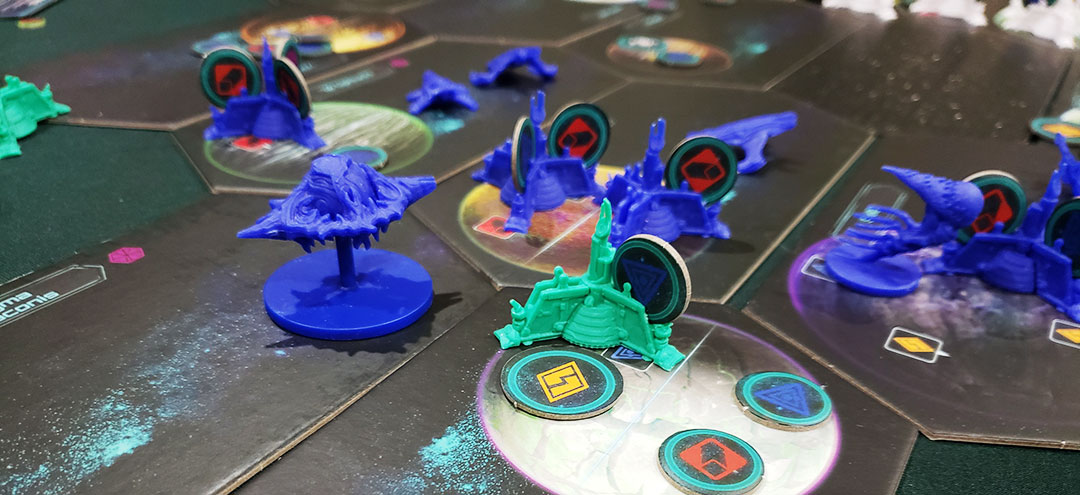
Game Impressions:
The most immediate thing noticeable about Hyperspace is that it plays fast and doesn’t deviate from a tried-and-true formula. Everything should be familiar to 4X space gamers and while the 3 actions a turn might seem like fodder for analysis paralysis, in effect it is smooth and turns go by quick. Fans of Twilight Imperium should note that this is a lighter game and won’t necessarily require deep analysis.
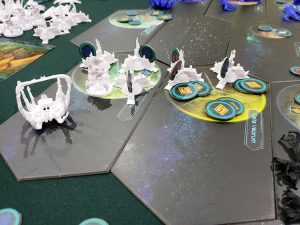
Since the Hyperspace box offered by Petersen Games contained only prototype components, it wasn’t confirmed what the final miniatures would look like. If Cthulhu Wars is any hint, the minis should be epic and functional. Overall there are not that many tokens and tablespace should not be a problem.
What really sets this offering apart is how casual yet storied the game feels, unlike other 4X space games. The complexity present in the game only comes from an initial read of the rules. Strategy and tactics are easily understandable from the start and really exploring each race’s unique shtick is where the true enjoyment of Hyperspace comes in. This brings it closer to a game like Cosmic Encounter’s “everyone breaks rules” style of gameplay, which is refreshing.
Final Thoughts:
The real market for Hyperspace is 4X fans who are tired of current offerings or who need a lighter gem to fill their shelf. It’s far from an intimidating game and can easily draw in players who are hesitant to try other epic games that measure playtime in hours, not minutes. The hidden victory point system with indeterminate game end also offers something not frequently seen in 4X games.
And, last but not least, Petersen Games is known for continuously supporting their product lines. Take a look at the Kickstarter and the continuing expansions offered for Cthulhu Wars for more evidence that Hyperspace is likely to be another continuously supported product from a reliable company.
Hyperspace is now in funding on Kickstarter. You can check out the campaign page here if you’d like to know more.
As always, we don’t post ratings for preview copies as the components and rules may change from the final game. Check back with us after the game is produced for a full review.
Disclosure: An employee for Petersen Games also writes for Board Game Quest. He had no influence over the opinions expressed in this preview.









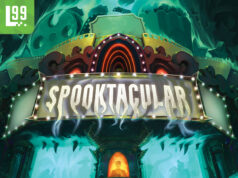












This reads like it’s very similar to Eclipse.